How to Build a Company Gym (And Why You Would Want To)
If you ask a handful of CEOs to describe the health of their company, they’ll most likely answer in numbers and charts, and dollars and cents. While you won’t catch me ignoring these valuable metrics, I believe that the wellbeing of my company is also measured by the health and wellness of my team.

How “Well” Is Your Company?
From day one, workplace wellness has been an essential part of the culture here at Zogics. I positioned our home base in the Berkshires so we’d be smack in the middle of a world renowned hub of health and wellness resources (and being in the foothills of an 18,000 acre state forest certainly doesn’t hurt either). I implemented flexible schedules, unlimited PTO, and incentivized participation in local CSAs, 10k’s, and more. Let’s be real, building a world-class company requires hard work — there’s no getting around that. But for me, being a believer in hard work also requires a strong commitment to making sure my staff feels healthy, productive, and supported so that when it’s time to come out of the woods and back into the office, we’re all feeling re-energized and ready to tackle the next big challenge.
Studies have shown that I’m not the only one who believes this — there’s plenty of data to back up my hypotheses. For example, according to the Alliance for a Healthier Generation, employers who decide to invest in their employees’ wellness see, on average, a 28% decrease in sick days and a 26% reduction in health costs. And from the American Journal of Health Promotion comes one of the most financially compelling arguments for prioritizing wellness: the average return on investment (ROI) is $2.38 for every dollar spent on employee wellness!
All said and done, reducing absenteeism, boosting productivity, increasing retention, and generating a positive return on investment are certainly compelling reasons to invest in a workplace wellness program. But beyond that, I know my staff is supported in every aspect of their own wellness journeys, and that we can collectively share more victories when everyone is engaged and at their best.
A company that works out together, works well together
Workplace wellness of course consists of many different dimensions and fluctuates based on each individual’s priorities. Similar to the idea that wellness is a continuous, ongoing and evolving process, our own internal wellness program is constantly evolving and adapting to our needs. Most recently, I decided to take our workplace wellness program to the next level and build a company gym. For us specifically, this new addition was born out of an increased need for flexibility, and having our own gym onsite would truly enable us to incorporate more wellness activities into our daily schedule.
Throughout the process, we learned first hand how to build a company fitness space that works, how to engage our employees and how to help build buy in and engagement with a culture of wellness. By asking the right questions and not being afraid to dive in headfirst, our results have been nothing short of astounding.
All of that sounding pretty good? Then read on to discover 8 key takeaways from our own company gym journey.
1) Know Your Staff
Survey your employees. While the aim is to design a wellness program that’s as varied and inclusive as possible, we wanted to know if our staff leaned more toward endurance athletes and powerlifters or yogis and meditation practitioners. The better we understood the wellness goals and interests of our staff, the better we could implement solutions that ensured maximum participation and benefit. In our case, we had a concentration of athletes and fitness buffs who had diverse interests. We had runners, cyclists, CrossFit fanatics, skiers, fitness class aficionados and a professional dancer. Therefore, we determined our space needed to be open, modular, and easily configured on the fly for a variety of fitness activities.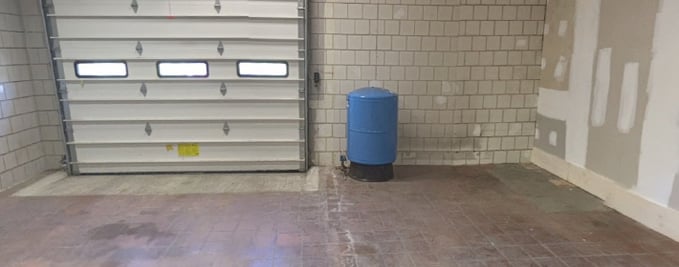
2) Identify Space
Assess your space options. We considered converting a large conference room into a gym but felt we might need the space for eventual workstations because our office was already bursting at the seams. We then looked at using a corner of our warehouse, which would have worked well, but we changed plans when a stroke of luck left us with a newly available garage adjacent to our office. It was an ideal size and had an overhead door we could open in warmer months. It also had a bathroom. Although you may not have an available garage next to your building, chances are you do have something equivalent within your existing space if you look at your environment through a creative lens, and if you remind yourself of the benefits to come with making that space.
3) Make it Feel Like a Gym
A company gym need only be a slick as you want it to be. We chose to keep things attractive but basic. A coat of paint on all the walls immediately cleaned the place up. We also installed some large mirrors. It’s amazing how mirrors can give any space a gym feel. Likewise, so can rubber gym flooring. We installed half inch rubber tiles throughout, custom cut for the room. The rubber flooring easily laid right on top of the existing concrete and provided an optimal exercising surface.
4) Use Technology
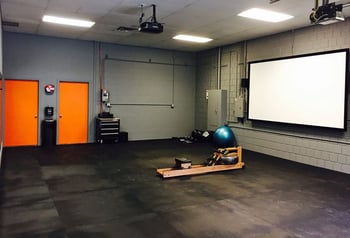
A little technology goes a long way. We installed a projector on the ceiling and a large projector screen on one wall, and it made a world of difference. The projector connects to a sound system and an internet enabled computer, which gives us the ability to stream music, pull up video fitness classes, watch Netflix while on the treadmill, and much more. Having something to look at and listen to helps transform the space into a fun and interactive environment, while simultaneously offering ways to pass the time while getting in a good cardio workout.
5) Take Your Time with Equipment
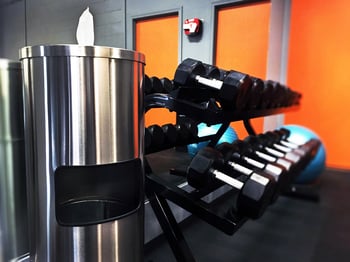
There is no pressure to get everything all at once. We decided to take a phased approach by stocking the gym with an initial round of basic equipment and then adding on as we became more familiar with how staff used the gym. We started with a couple of spin bikes, a rower, a treadmill, a set of dumbbells, a flat-to-incline bench, a set of kettlebells, some plyo boxes, a pile of resistance bands, a TRX, and a ballet barre. This mix offered something for everyone and was diverse enough that anyone could walk into the gym and find multiple things they felt comfortable and excited about using. A bonus for us was that the products we put in our space — from the flooring and water fountain to the cardio machines and kettlebells — were products we sold, so our company gym doubles as a showroom and educational resource for our staff.
6) Be Patient
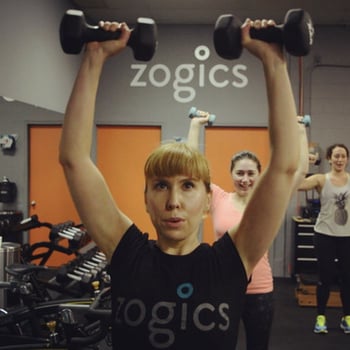
Truth be told, we got off to a slow start. I often joked that I built myself a private executive gym since I was the only one using it. Then one employee started working out in the mornings, and another began using the gym for mid-day stretch breaks. Soon after, staff began teaming up for on-demand fitness classes, and the gym began to see more traffic. To build on the growing momentum, we brought in a boot camp instructor to lead classes twice a week, which eventually became so popular that we started to exceed the capacity of the space and had to move equipment aside just to fit everyone. Now, within less than one year of the gym’s inception, we have groups of employees that regularly work out in the mornings, groups that regularly work out at lunchtime, and groups that are committed to the evenings. We even have some who come in on the weekends.
7) Make it a Lifestyle

A key component to getting the most out of any company gym is aligning corporate wellness with corporate culture. Although the main hub of our wellness program is our on-site gym, our focus on health does extend beyond those four walls. For example, we use Slack, an internal messaging tool, and have channels devoted to wellness, healthy recipes, and local fitness activities that we post to daily. We hold fitness challenges with cash rewards. We give a $250 annual allowance to each employee to cover competition entry fees. We subsidize CSA memberships and have fresh fruit and vegetables delivered to the office. We have bike racks in our entryway and purposefully located our office adjacent to a state forest so we can hike, trail run and cross country ski right from our front door. We bring in personal trainers, fitness instructors, and health practitioners who educate and motivate. During particularly busy times, we book a masseuse for the day and offer free, on-site massages. By creating a culture of wellness, participation in these healthy activities increases across the board.
8) Lead by Example
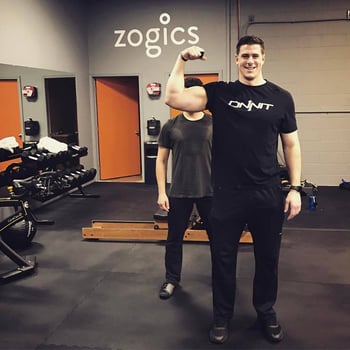
Leading by example is the best way to inspire others to care about healthy living. As CEO, I take full advantage of our wellness programs because it encourages others to follow suit. I make sure I’m the most frequent visitor to our gym. I work out regularly, join all boot camp classes and publicly share my fitness accomplishments (and setbacks). I keep my bicycles, running shoes and cross country skis in the office so others see when I head out to exercise. I also try to eat healthy in the office. It’s important for employees to feel a culture of wellness is believed and lived by senior management. As Peter Drucker says, “Leadership is lifting a person's vision to higher sights, the raising of a person's performance to a higher standard, the building of a personality beyond its normal limitations” When applied to wellness, everyone wins.
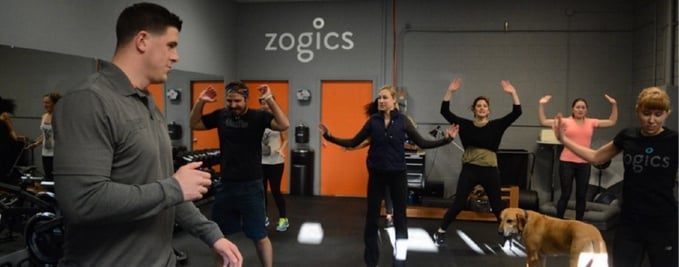
Notice the Impact
The benefits of having a company gym extend beyond just dollars and cents. It didn't take long for us to notice an improvement in mood and strengthening of relationships within the office. As anyone who has been on a sports team can attest, a special bond is created when individuals both suffer and achieve together. The bottom line: the more we commit to employee wellness, the better we function as a company. Now our goal is to create the healthiest workplace in the country. While we have more to do, we’re well on our way.
Paul LeBlanc is a fitness enthusiast, a former member of the U.S. Cycling Team, and founder and CEO of Zogics.com, a leading one stop fitness shop for gym and wellness facilities.

Related Content:
Empower your staff and reassure your community with our FREE downloadable cleaning and disinfecting guides for fitness centers, educational settings, hospitality facilities and more.
Topics from this blog: industry news Workplace Wellness
Back


